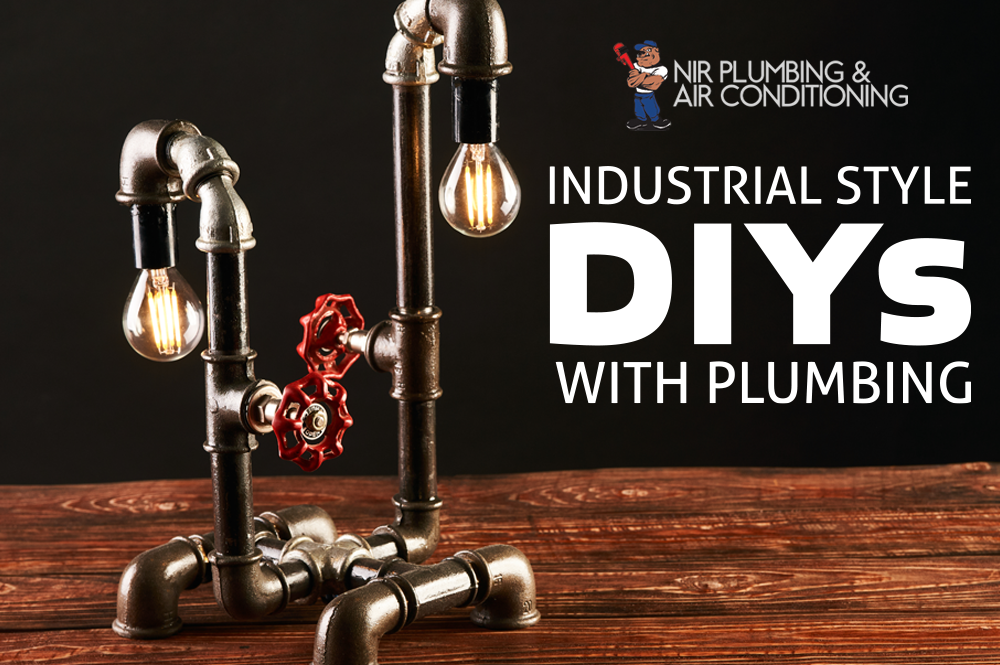[vc_row][vc_column width=”1/1″][vc_column_text]Everything you need to know about PEX plumbing pipes, from it’s copper predecessor to using PEX in mobile homes[/vc_column_text][vc_column_text]
PEX piping, or cross-linked polyethylene, is a type of flexible piping that’s used as an alternative to copper and galvanized piping. It’s a favorite in new construction projects because of its increased flexibility and durability.
There are both advantages and disadvantages to plumbing with PEX pipes so we’re going to go over the main points that often come up.[/vc_column_text][vc_column_text]
HOW TO IDENTIFY BAD COPPER PIPES:
[/vc_column_text][vc_column_text]
In order to talk about PEX piping, we have to talk about its predecessor, copper pipes. Ones that have been properly installed have a long life (50 years or more), but they do go bad eventually.
According to Tim Rausch Plumbing: “Original copper pipes may be nearing the end of their useful lifespan, but it’s not always easy to recognize when they are begging for replacement. When copper pipes are just starting to corrode, leaks don’t always gush forth and make themselves obvious.”
So here are 3 early signs you can look for to determine if it’s about that time to replace your copper pipes:
-
Smell. Over time, you begin to notice a stale, musty smell that you cannot quite identify. It is even more confusing if the smell is in a laundry room, bathroom, or a child’s room because you naturally think that the smell is related to the room. But the odor is more like stagnant pond water, and it persists.
-
Evidence. Wide bulges may start to develop on the ceiling or on walls. This is due to pinhole leaks in the copper slowly dripping on the drywall, causing it to expand.
-
Visible. If you open a wall or ceiling for some purpose, such as adding insulation, you may notice that copper pipes in the wall or floor cavity have become green, crusty, and corroded. Such pipes may even already have pin-hole leaks that are beginning to ooze water, but so slowly that dripping is not yet evident.
Any or all of these signs mean that your copper pipe is on its way out.[/vc_column_text][vc_column_text]
SHOULD I REPLACE MY COPPER PIPES WITH PEX?:
[/vc_column_text][vc_column_text]While we’ve seen that copper pipes have had a name in the plumbing for many years field due to its amazing specifications of heat resistance and high-pressure resistance, there’s one major problem with the use of copper: It’s more expensive than other materials.
For homeowners looking to replace their copper pipes with a more affordable alternative, replacing with PEX is a good call. Here are some additional problems with copper pipes that PEX can solve:
-
Keep hot water hot: PEX keeps the water warmer as it flows through the pipe so that you get hotter water on the other end.
-
Reduce condensation: PEX pipes are much less likely to develop condensation and create moisture issues in your home.
-
Loose fittings: Copper pipe is very sturdy but not very flexible. Sometimes this can result in loose fittings. PEX is much more flexible, and it expands and contracts in the heat better. This flexibility helps keep its fittings intact. PEX also requires fewer fittings, so it has fewer weak spots, so to speak.
-
No corrosion: As a plastic and not a metal, PEX pipe will not corrode. While copper won’t corrode for many years, it will eventually give out to corrosion.
-
Chemical resistance: PEX is better at handling chemicals in the water. If you have slightly acidic water, PEX won’t be affected, while copper will be.
-
Color codes: PEX pipes comes in red and blue for hot and cold supply lines. This color coding can help prevent confusion during installation, maintenance and repairs.
-
Quieter pipes: Water won’t make as much noise when it runs through PEX pipes. You also won’t hear water hammers if they develop in your pipes (although you’ll still see the pipes flex, which will alert you to the problem).
For more information on the benefits of PEX pipes in comparison to traditional copper pipes, click here.[/vc_column_text][vc_column_text]
LEVELS OF PIPE REPLACEMENT:
[/vc_column_text][vc_column_text]
When you run into corroded or leaking copper pipes during your remodeling projects, you have several DIY options. The Spruce relays them below:
Spot Fix:
When you find leaking copper pipes, you can take the bare minimum approach, cutting out the bad section and replacing it with PEX. Often, you can get by with installing just a single push-fit connector in that area.
Replace Visible Runs:
As a compromise between complete re-piping of the entire house and small patches, you can replace large sections (10 feet or longer) of exposed copper pipe with pex, branching out where needed.
Re-pipe:
Cost aside, the best long-term solution is to re-pipe your entire home, replacing copper pipes with PEX. We know we’re starting to sound redundant, but wasn’t this the obvious next point? Repiping involves disconnecting and bypassing all your existing copper and running new PEX lines throughout the house. You can either follow the current pattern or start anew with a PEX manifold-and-branch system.[/vc_column_text][vc_column_text]
WHAT ABOUT IN A MOBILE HOME?:
[/vc_column_text][vc_column_text]
The Webers own a YouTube channel dedicated to their family life living in a mobile home. Mrs. Webers refers to PEX piping as “a lot easier to use” and even refers to it as “tinker toys” because you’re essentially sticking pieces together.
The thing about plumbing in a mobile home is that all of the plumbing is so close together, and affordable, less complicated solutions are always better.
In this video, Plumbing with PEX in a Mobile Home, the family focuses on plumbing in the outdoor faucets. One of the biggest challenges they came across was handling the large heavy crimper because the tool is heavy, unwieldy, and the crimps must stay 1/8″ to 1/4″ from the end of the pipe. So if the tool moves the copper circle due to gravity, it becomes a constant fight between you and the crimper (with the copper circle stuck somewhere in the middle).
Her suggestion: It’s always to crimp if you do the free pipe first that way you have free-range and motion on the tool. Of course, working in tight places such as a mobile home could increase the difficulty. Be sure to check out the video here for a detailed visual of how to use PEX pipes in a mobile home.[/vc_column_text][vc_column_text]
PROBLEMS WITH PEX:
[/vc_column_text][vc_column_text]
As we’ve mentioned, PEX is versatile because it can adapt to both cold and hot temperatures; however, this is also a fault. PEX melts, so you must keep the pipes away from heat sources (standard codes specify an 18-inch distance from the water heater and 6 inches from the single-wall flue on a gas water heater).
The tubing kinks if you try to bend it too sharply, and it’s hard to get the kinks out. Our suggestion is to avoid bending PEX around 90-degree corners; use 90-degree elbows instead.
Also, repeated movement against the framing can wear PEX and create a leak. To prevent this, you need to protect the tubing with abrasion clips when feeding it through holes in joists and studs.
Related article: How to Do Plumbing with PEX Tubing[/vc_column_text][vc_column_text]
IN CONCLUSION:
[/vc_column_text][vc_column_text]
When it comes to pipes, we learn something: While copper is an excellent material, no material is perfect. You can develop some problems with your copper pipes, and PEX is often a great replacement that can eliminate these problems. At the same time, PEX has its fair share of problems that copper doesn’t.
Your best bet when it comes to deciding which type of pipe plumbing to choose is to reach out to a plumber near you. You’re better off asking a professional for guidance rather than making a rash decision and subjecting your home to more challenges in the future.
CHECK OUT THESE RELATED SERVICES:
[/vc_column_text][/vc_column][/vc_row]


